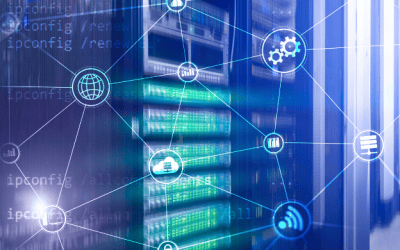Understanding the cybersecurity terminology and acronyms can have your head spinning. Whether you’re just beginning to understand the industry or a veteran who is trying to keep up with new buzzwords, we have you covered. In this post, we will be breaking down three big key terms within the cybersecurity space: EDR, XDR, MDR.
Each of these terms define different approaches to detection and response, and while they are closely related, there are several major differences that set each of them apart. Many organizations struggle to understand what they need because they may not have a clear understanding of the outcome that each provide.
Endpoint Detection and Response (EDR):
Endpoint Detection and Response (EDR) does what it describes, it focuses on preventing, detecting, and remediating cyber-attacks for endpoint devices. Endpoints include desktop and laptop computers, tablets, smartphones, IoT devices, servers, cameras, digital printers, etc. EDR is important because in many cases, the endpoint is an entry point for many cyber criminals.
EDR sets itself apart with a focus on active monitoring and visibility. It allows teams to gain more insight into what is happening on an endpoint so they can pivot and resolve quickly. EDR can also integrate with larger solutions like a security information and event management (SIEM) platform.
A set back to EDR is the narrow focus on only endpoints which can leave other doors open. Without additional context from what is happening in the cloud or network, it’s more difficult to understand that is a true threat and what is a false positive.
EDR can get complicated, however the solution can remain simple. A single lightweight agent that can be deployed and scaled quickly with little effect on endpoint performance is the most effective and beneficial approach.
eXtended Detection and Response (XDR)
XDR is a newer approach to threat detection and response that provides holistic protection against cyber-attacks. XDR technology collects and then correlates data over a variety of security layers, such as endpoints, cloud and networks. XDR conducts an in-depth analysis of not only internal traffic, but also external traffic to identify potential attacks.
The main goal of XDR is to provide an organization with a full visibility that is connected throughout all endpoints of a network’s infrastructure. This leads to conjoined remediation, improved attack understanding, and unified threat hunting. Think of XDR as taking on the project manager role. The one who oversees everything; gathering data from across environments to predict an attack, monitoring all devices, and taking action-based remediation on factual data.
XDR makes room for improved security and response, as well as enhanced productivity, all while reducing costs to your organization.
Managed Detection and Response (MDR)
MDR is not a specific technology, but rather a managed service that packages the benefits of EDR and XDR into an offering to help offload the challenge of hiring cyber security professionals in-house. It’s easy to assume that EDR and XDR platforms generate a lot of data, requiring organizations to then sift through the data and triage each individual alert. This can lead to teams that are exhausted with alert fatigue and potentially can create high turnover internally. MDR offers organizations the opportunity to outsource their detection and response responsibilities to an experienced third-party provider. Organizations can free up time for their IT and security teams to focus on and support other business goals.
MDR proactively hunts for threats rather than just reacting to them. Once a threat is found, they are responded to rapidly thus limiting any long-term damages the threat could have caused. Additionally, MDR solves the challenge of cost. For an organization to be truly secure, it would need to operate a large, highly skilled 24/7/365 in-house team. Most businesses do not have the finances and/or their IT team does not have the bandwidth to handle cybersecurity threat hunting. MDR provides organizations the ability to utilize cutting-edge security software with a dedicated team of cyber experts with 24/7/365 support for a fraction of the cost of doing it in-house.
AgileBlue combines their own EDR and XDR platforms to provide a 24/7/365 MDR. We are proven to detect threats fast and more accurately across your entire digital infrastructure and cloud. Let our MDR services do the work so you can rest easy. Request a demo with our team today.




